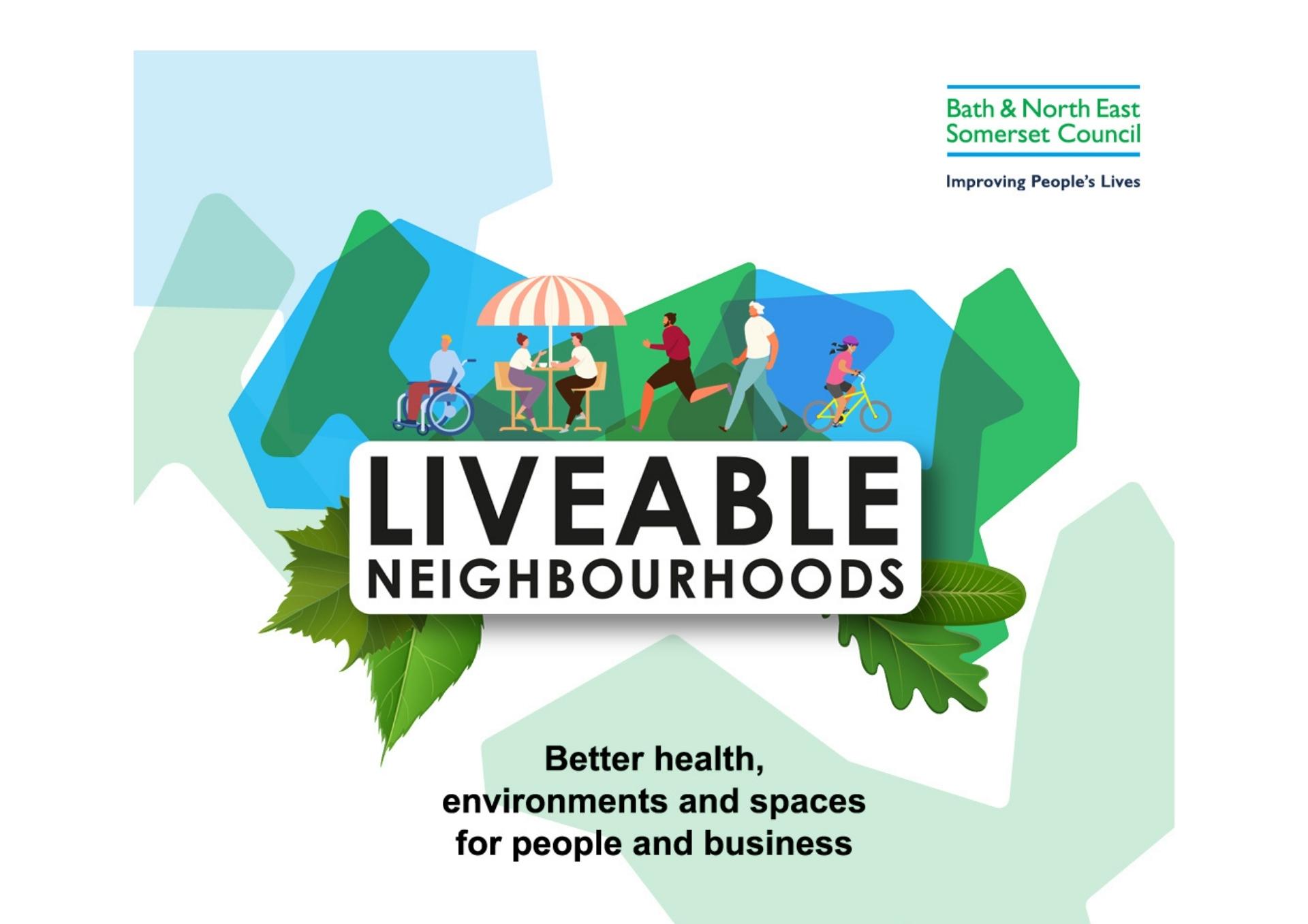Date published: 2024-01-26 | Category: Roads, travel and transport, Delivering for local residents

Proposals to make three Liveable Neighbourhood experimental trials in Bath and North East Somerset permanent have been approved.
Through-traffic restriction trials in Southlands (Weston), Queen Charlton Lane (Whitchurch) and Church Street (Widcombe) were installed under experimental traffic regulation orders (ETROs) in November 2022 under the Liveable Neighbourhoods programme.
The trials were the outcome of significant consultation with communities as part of the council’s Liveable Neighbourhoods programme and a decision to make them permanent has been taken by Councillor Manda Rigby, cabinet member for Cabinet Member for Transport. The decision is subject to a five-day call-in period.
If the decision isn’t called in, the council would start a Traffic Regulation Order process from 5 February to legally put the traffic management schemes in. If this happens, the Traffic Regulation Order it could be in place in the early spring.
During the trials, the council gathered feedback from residents and monitored the impacts of traffic on surrounding roads and air quality so that the decision on whether to keep or remove the trials can be based on the evidence collected, while also considering council policy.
In each location, the purpose of the through-traffic restriction was to prevent motorists from using inappropriate residential roads as short cuts, while maintaining vehicle access to homes, and to provide a safe and pleasant route for walking and cycling. The need to tackle excess through traffic was identified by these communities during earlier consultation and co-design for the LN programme.
The reports, which are on the council’s website as part of the Single Member Decision covered the impact of the trials on traffic and air quality, and responses to the six-month public consultations and surveys conducted with residents living on and around the trial streets.
Councillor Manda Rigby, Cabinet Member for Transport, said: “I want to thank everyone who has taken part in consultations and given their feedback. Before starting the trials reports showed nearly half of all traffic in Southlands and Church Street was through traffic, defined as vehicles using the road without stopping. After the trial in all cases, the number of vehicles entering the streets for access from either end of the restrictions also dropped significantly, in addition to through traffic being cut to zero.
“The monitoring reports showed that no significant traffic impacts were recorded on the primary alternative routes as a direct result of the trials and, most commonly, there were air quality improvements within and outside the trial area. In all cases, the NO2 readings are well below the government legal limit and also within the council’s own stricter targets. Having taken the decision to make the schemes permanent and subject to the call-in period the Traffic Regulation Order could be in place by the spring.”
The council is now considering proposals for five more traffic restrictions under the LN programme in the Lower Lansdown and Circus area, in the Lyme Road and Charmouth Road area, and in the New Sydney Place and Sydney Road area, all designed – in line with council policy - to prevent residential areas being used as short cuts and increase choice and safety for those that choose to walk, scoot or cycle.
The long list of proposed interventions suggested by local communities across all the Liveable Neighbourhood areas is being reviewed by local councillors and considered as part of a full business case to be submitted to the West of England Combined Authority in early summer 2024.
More information on the Council’s Liveable Neighbourhood Programme can be found at www.bathnes.gov.uk/liveableneighbourhoods. To find the reports on the trial schemes follow these links:
- Queen Charlton Single Member Decision Report
- Southlands Single Member Decision Report
- Church Street Single Member Decision Report
ENDS
Notes to editors
Once a decision is published there are five clear working days in which the decision can be called-in for review. The number of councillors required to submit a call-in request is nine or more.
Following the receipt of a valid call-in the relevant Overview and Scrutiny Panel will consider the issues raised in the call-in request and may:
- Dismiss the call-in
- Refer the decision back to the decision maker for reconsideration
- Refer the matter to Council to undertake the role of the Panel
